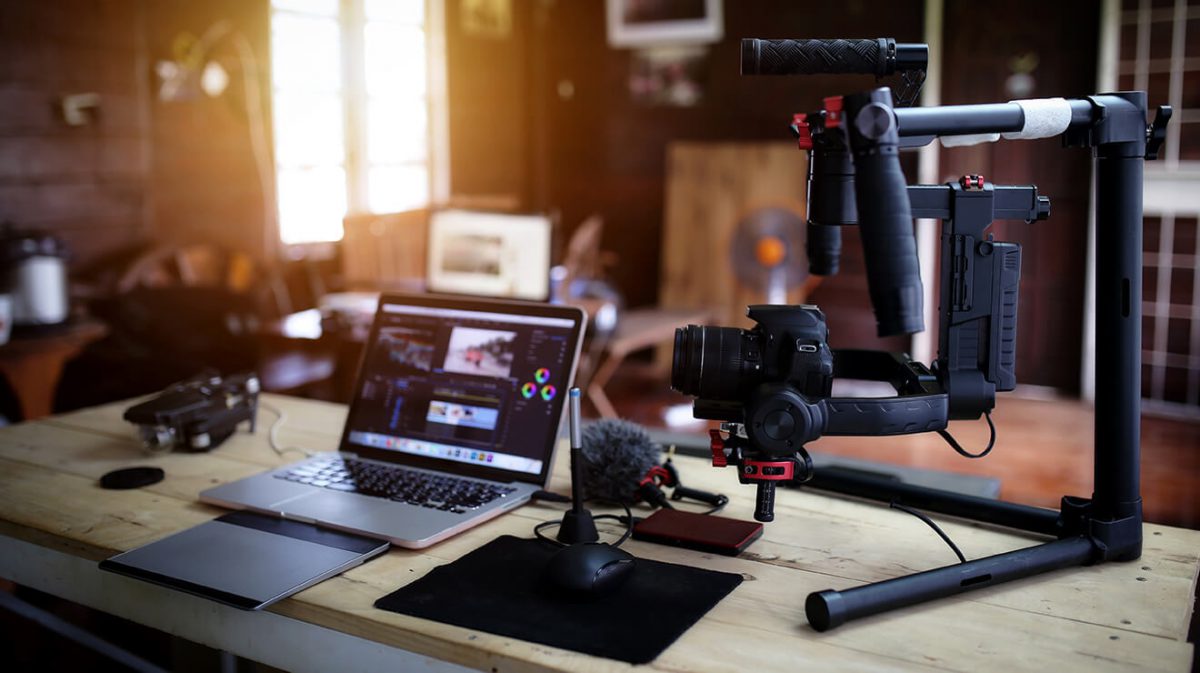For much of the past year, it felt like the only constant was change. Many video productions were scrapped along with any other sizable gatherings, and even seasoned professionals were tasked with learning new ways of doing things. As 2020 draws to a close, we’re looking at the changes most likely to persist well into the New Year.
1. Live Streaming Takes the Main Stage
This should come as no surprise. In 2020, we saw live streaming become a go-to form of video for so many businesses. Of course, live streaming isn’t new, but in the past year, live video became a weekly, if not daily, part of our professional lives.
While many had already tried live streaming on occasion, more and more businesses made it a central part of their marketing and communications strategy as they sought alternatives to in-person events, and ways to drum up excitement while remote.
Live streaming allows you to create unique experiences that connect you directly with your audience in real-time. Businesses have a great opportunity to double down on this trend to boost their marketing and create more content. You could produce video interviews, launch products live, hold virtual events, and more.
Now that live streaming is the norm, we don’t see it going away. This is not a flash-in-the-pan trend: it’s the new way to do business. Even when in-person events are possible, live streaming is an additive way to increase exposure and reach.
The opportunity for live video is vast, so don’t be afraid to get creative with it. For more inspiration, check out these ‘4 innovative ways brands are using live streaming.
2. The Show Will Go On
It was hard to see how video productions would be able to continue when everything started shutting down earlier this year. However, like many others, we as an industry found a way to persevere. If this year taught us anything to take with us into 2021, it’s how to adapt when traditional methods don’t work. While larger productions will likely snap back to tried and true methods as soon as they’re able, the skills and efficiencies gained by smaller productions out of necessity are not going to evaporate overnight.
For instance, if you went from being filmed in a studio or in your offices, to having your own setup at home, you’ll probably keep using it. After all, it’s an effective and low-budget way to produce solid content, and that won’t change moving forward.
If nothing else, this year has shown so many businesses that they can produce a high-quality video with whatever resources they have. We hope people keep this same energy in 2021 and beyond. Explore our posts on filming solo and check out our behind the scenes content of our most recent production to learn more.
3. Remote Video Production
Along the same lines, remote video production isn’t going away any time soon. This takes the best of both worlds from the section above, and pushes them together into a unique but effective way to produce a video with multiple people involved. Remote video production will put your communication skills to the test, but the outcome is a type of video that checks all the boxes while keeping budgets under control.
For instance, this past summer we produced several videos with a fully remote team, and learned a lot about what we could accomplish while in separate locations. We had to make some gear purchases and do plenty of testing, but in the end, we were able to come up with a process that works for our business. Going forward, we feel this only adds to our strengths in terms of content development because we’ll be able to be more flexible in the future.
We’re surely not the only business feeling this way. We expect more businesses to continue with decentralized video productions, and to create more content as a result.
4. Simpler Productions
One side effect of remote productions has been a shift in standards for what is acceptable for business video in the era of social media. When major networks started airing interviews and segments with people at home filmed on Skype or Zoom, it shifted expectations away from studio-quality backdrops and lighting.
For most businesses, what you say is going to be more important than how you say it. Seeing people record from their homes, recording on phones, and going live whenever wherever just goes to show that if the content is good, people will watch it. Not to mention how fast and adaptable this type of video production can be.
Fundamental changes in tastes and expectations are likely to prove persistent, even when higher production values become easier to maintain. After all, why spend more money and time than you have to on a production if you can get the message across just as effectively with less?
5. Movement Toward Widespread Diversity
While the movement to increase diversity in front of and behind the camera isn’t new by any means, the events of this past year have certainly placed a new emphasis on the importance of addressing this issue.
Historically, the film and video industry has been dominated by white men. While this is problematic for a number of reasons, not making a sincere, conscious effort to be diverse will hinder you a lot more than you may think.
One of the many notable benefits of having an inclusive and diverse video team is having people with different perspectives, which will result in even better content. In addition, having a diverse team will help squash any unfortunate missteps you may have made otherwise. If you think it can’t happen to you, we’ve seen problematic content from big brands like Pepsi and H&M. Building a diverse video team for on-camera and behind camera work, and fostering a supportive, inclusive work environment will dramatically improve your content.
A lot of brands took a stand to do better in this regard, and we as consumers need to hold them accountable. Nevertheless, like producing video itself, we all have to start somewhere. This summer, we put together a step by step guide to authentically inclusive video marketing. We think it’s a great place to start for companies on their journey to becoming more inclusive.
6. Creating Accessible Videos
Inclusive video production spans far beyond just including a diverse workforce. Inclusive creation looks at all aspects of the video and does its best to keep in mind people that are often overlooked or can’t watch videos in a “traditional” way. Creating accessible videos is not only the right thing to do, but also ensures that a wider audience can enjoy your content. A few simple steps can make a huge difference.
A short list of changes you can make to improve accessibility includes the following:
- Choose colors with good contrast.
- Make sure your videos come equipped with subtitles.
- Avoid flashing content.
- Make a transcript available.
To learn more, check out this article from 3Play Media for an in-depth look at how you can make your videos more accessible for all.
7. Formatting for Everything
As many of us are doing more with less, it’s even more important to get the most out of your content. And, since the number of platforms for sharing video continues to grow, formatting your videos to match these platforms remains a challenge. The standard 16:9 works well in many places, but taking it a step further to produce for different social platforms is going to help your videos stand out.
A few things to keep in mind to make your job easier include the following:
- Plan to crop
- Maximize your depth of field
- Be conscious of video length
- Create standalone teasers
For an in-depth analysis of these four points, explore our secrets optimizing for social sharing to learn more.
8. Budgeting for Change
Unless you could see into the future, there was no way to account for all the curveballs we were thrown this year. This means your budget was probably pretty off for what you thought was going to happen versus what you could actually get accomplished. Given the broader state of the economy, careful planning is more paramount than ever.
A lot of the predictions above will play a big role when you’re drafting your budget for video production. Moving forward, the number and complexity of shoots, any equipment you’ll need to purchase to work solo or remote, and the cost of hiring extra talent all need to be accounted for.
We use a specific blueprint to accurately forecast our budget for video production. Hopefully, with these predictions in mind, and our guide to budgeting for video, you’ll be in a much better place to plan out 2021.
2020 was a big test for video production and marketing across the board. We think the lessons learned are going to be instrumental as we move toward a post-COVID world. What trend or lessons will you be taking with you into 2021? Let us know in the comments below.








